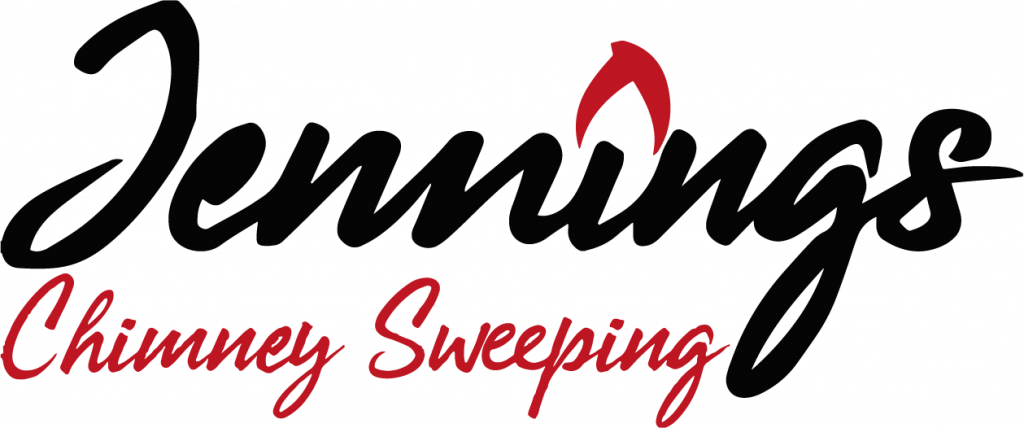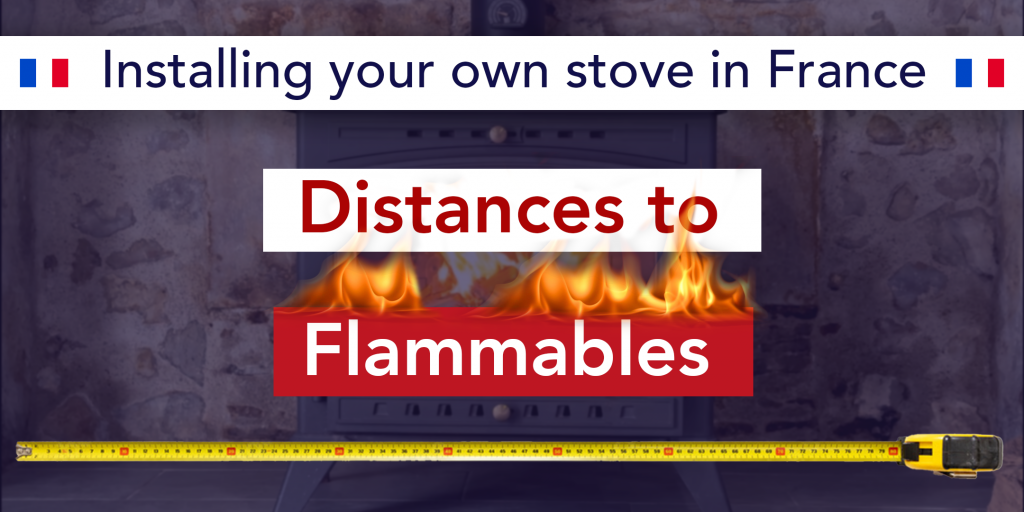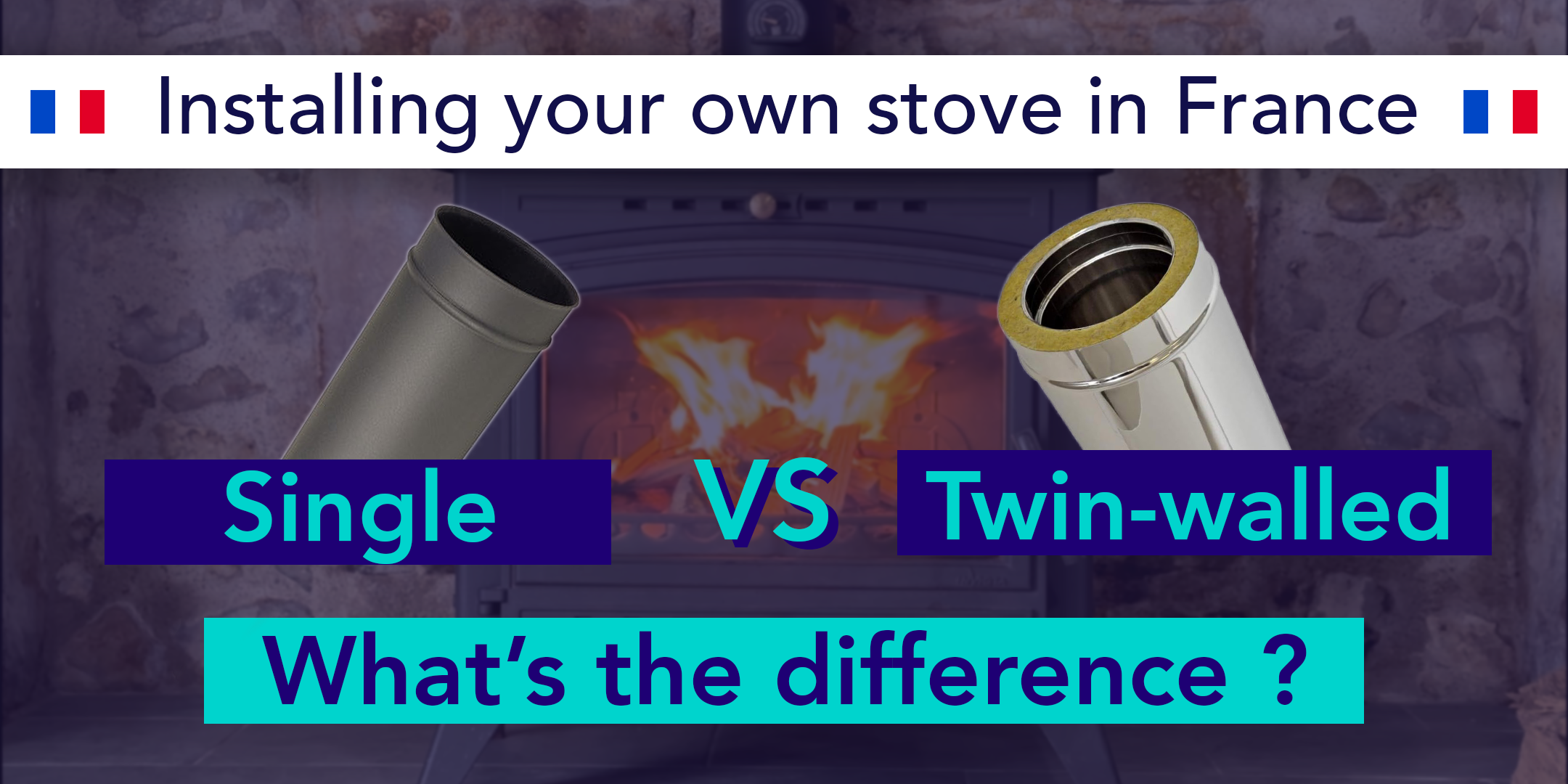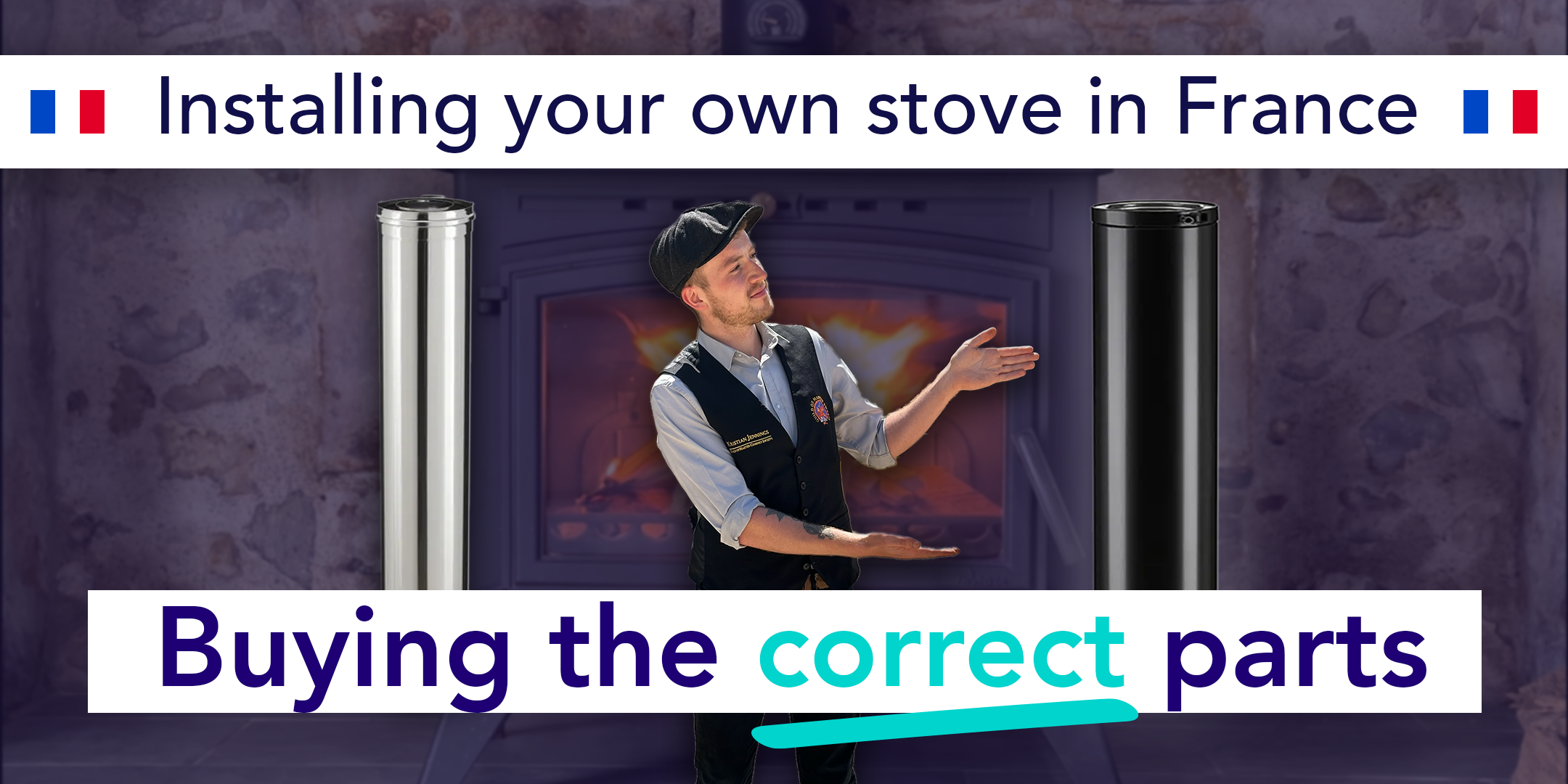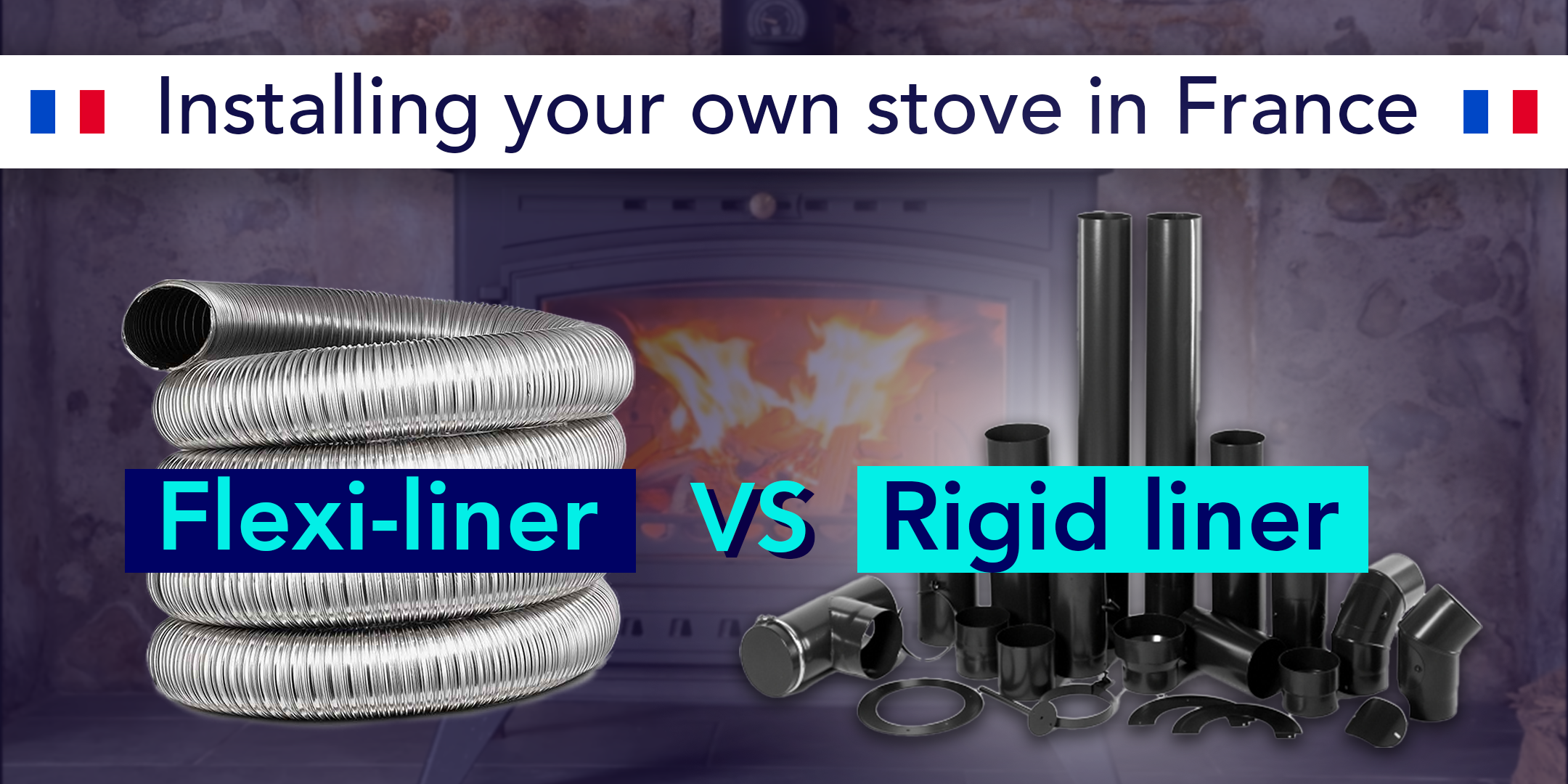Stoves are made of non-flammable materials for obvious reasons. This also applies to the chimney system and extends to the surrounding area. We have previously discussed the first step in every installation, which is to conduct a débistrage before installing the chimney liner. Without this step, the 300 °C+ hot pipe could ignite the flammable ancient tars, leading to a chimney fire. However, ancient tar deposits are not the only flammable objects you are likely to encounter around your fireplace. Knowing how to identify and mitigate potential heat traps and other risks is imperative for installing your stove safely and in compliance with regulations.
The obvious
One would hope that the following sentence would fall under common sense, but having seen this error made countless times, unfortunately, it does need to be said: You must not use any flammable objects as part of your installation. This includes plastic raw plugs, standard plasterboard, or, amazingly, making the closure plate out of wood! Yes, it has happened, as shown in the pictures below!
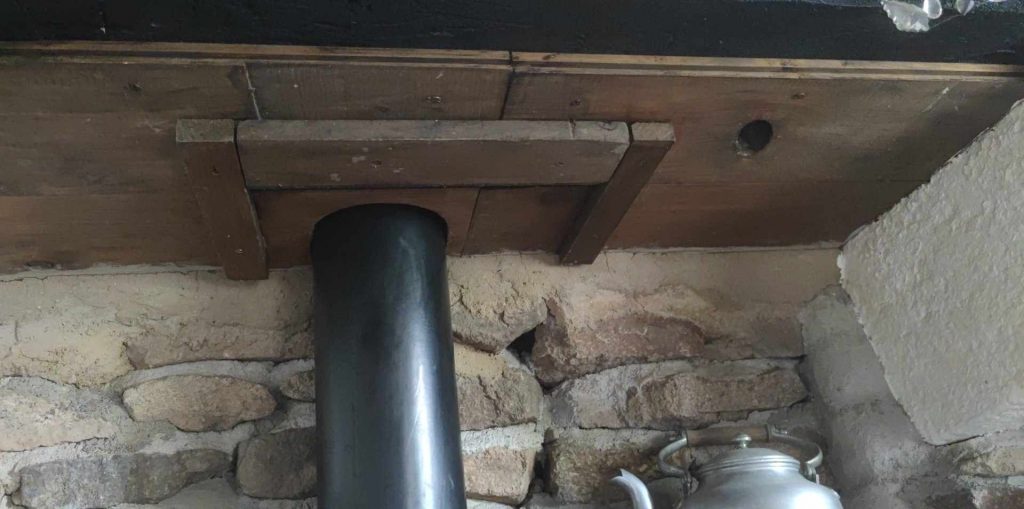
Instead, all screws, brackets, and fittings must be made of non-flammable materials, most likely metal. Any fireboard must be fire-resistant rated. If you are installing insulation above your closure plate, ensure it is not the paper-backed kind. Also, although it is not technically part of the installation, you must not store wood next to your stove.
Safety distances
Your appliance’s manual will detail the distances required by the manufacturer to ensure compliance with heat traps, etc., for the appliance itself. Usually, the values given are higher than those that the chimney system itself must conform to. As for the chimney system and for the purposes of installing our solid fuel appliance, there are two rules that we must adhere to:
- For a single skin flue liner, there must be no flammable objects within 3x the diameter of the liner
- For a double skin (Insulated) flue liner, there must be no flammable objects within 80mm of the liner
This measurement is taken based on ‘line of sight’. Therefore, if you can draw a straight line from a flammable object to any part of the flue and it violates one of the rules above, something must be done about it. The diagram below should explain how to correctly identify objects that are violating safety distances to flammable objects.
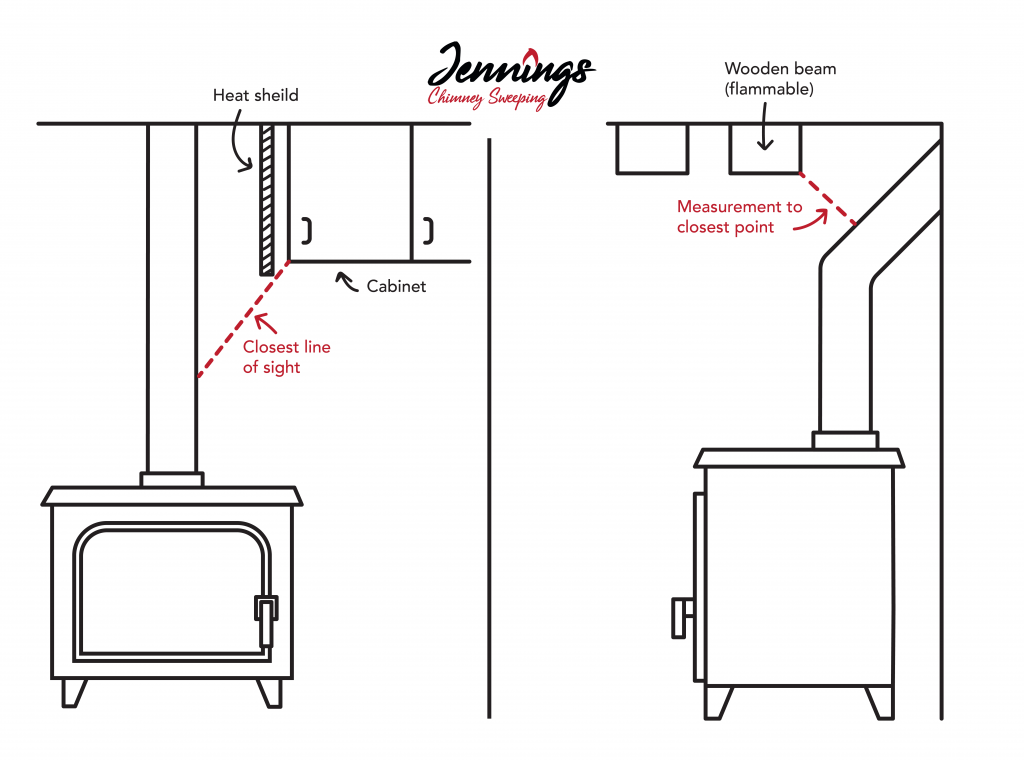
Amending the issue
When a flammable object is too close to the chimney system, you have two options. Depending on the object that is too close, one option will always be preferable to the other. Option 1 is to simply remove or relocate the object. For something such as a shelf or ornament, this is the simplest solution. Option 2 is to install a heat shield to protect the object from the system’s heat. For something like a wooden beam or lintel, this is obviously the easiest option. Installing a heat shield is as simple as installing a non-flammable object, such as a metal plate, in the way of the flammable object and the system. It is recommended to install the object on some kind of strut or spacer to allow a minimum 1.2mm gap between the flammable and non-flammable object to allow cool air to circulate between the gap via convection, keeping the flammable object cool.
Why we need to protect flammable objects
The process of Pyrolysis causes thermal decomposition to flammable objects experiencing high temperatures. Although it may take a while (months, years, or even decades), it is technically possible that objects within 3x the diameter of the system could catch alight, even at these distances, as their ignition temperature drops through the pyrolysis process. In essence, every time the object gets hot, the ignition temperature gets a little bit lower, and the chance of it catching alight increases. Multiple times, I have found unprotected flammable objects charred next to the appliance/system, which could have led to a more serious situation if not discovered.
